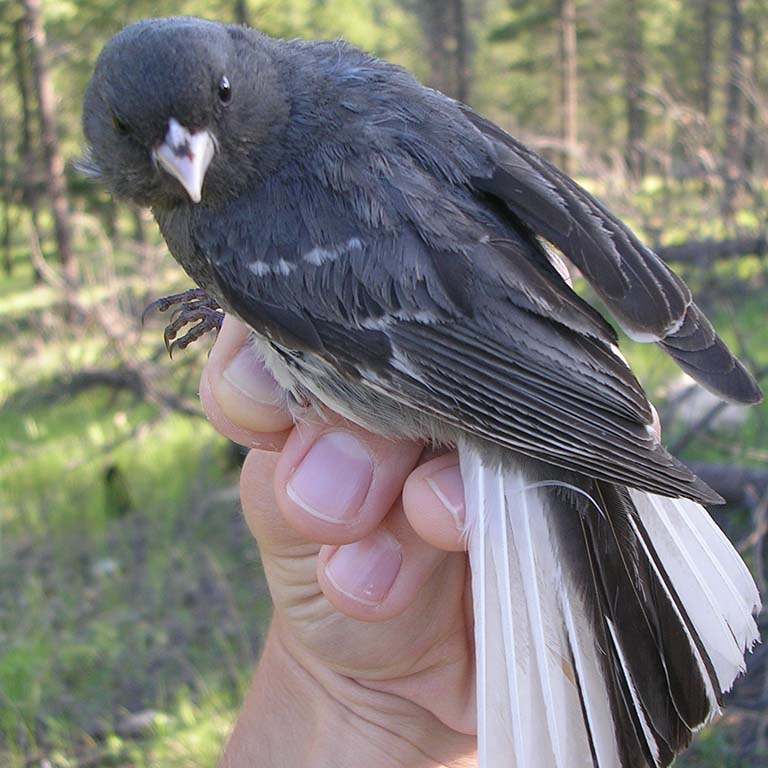In many organisms, individuals that produce more offspring tend to have shorter life spans than individuals who aren't as productive. But how does this happen? Biologists examining data from an Indiana University decades-long study may have solved part of the puzzle.
Ellen Ketterson, Distinguished Professor in the IU College of Arts and Sciences Department of Biology, has been studying the dark-eyed junco (Junco hyemalis carolinensis), a common North American bird in the sparrow family, at the Mountain Lake Biological Station in Virginia since 1979. She and her research group have been making an annual census of the junco population at the station since 1984; their almost 40 years of consecutive data has been interrupted only once—in 2020 because of the COVID-19 pandemic. They return each year to determine who is still alive and what attributes the survivors have. Ketterson's nearly seamless records of individual birds' lives are crucial in understanding about the evolution and behavior of birds as well as ourselves.
The stakes are high: Male juncos must defend a territory and attract a mate to have a chance at reproducing. Breeding pairs must then compete for food—not only for themselves, but for their offspring. There are winners and losers each year; some junco pairs produce up to 15 young while most will fail entirely. Males must balance the conflicting demands of reproduction and survival; they must choose between the urge to rear more young or look after themselves.
Research has established that elevated testosterone in male vertebrates (mammals, birds, reptiles, amphibians, and fish) can increase reproductive success but simultaneously decrease survival.
One way that testosterone may reduce lifespan is by increasing telomere loss. Telomeres are bits of non-coding DNA at chromosome ends that function a little bit like a shoelace cap to protect the coding sequences from loss during cell division. Telomeres have been shown to shorten in response to reproduction. Once telomeres get too short, cells stop dividing and can die, and individuals with faster telomere loss and shorter telomeres often do not live as long.
Using samples collected as part of Ketterson’s long-term junco study, biologists from North Dakota State University and Indiana University measured the effects of experimentally elevated testosterone on telomere shortening in free-living, male dark-eyed juncos, a system in which the experimental elevation of testosterone has previously been shown to increase reproductive success and reduce survival. They found that the telomeres of male juncos exposed to higher testosterone levels did indeed shorten more quickly as they aged. The result of their analysis was published in Molecular Ecology.
“This result is interesting because it suggests that exposure to higher testosterone may increase the rate of biological aging,” said Britt Heidinger, associate professor of biology at NDSU and lead author of the study. “The results are consistent with the hypothesis that increased telomere shortening may be a long-term cost of elevated testosterone exposure in males investing heavily in reproduction. As both testosterone and telomeres are conserved physiological mechanisms, our results suggest that their interaction may apply broadly to the long-term costs of reproduction in male vertebrates.”
The authors of this study hope their discovery may contribute to solving the mystery of why some animals (and humans) die young while others manage to live long and healthy lives.
Heidinger (Ph.D. ’07, EEB), Samuel P. Slowinski (Ph.D. ’17, EEB), and Nicole M. Gerlach (Ph.D. ’10, EEB)—authors on the study—were members of the Ketterson lab while pursuing their graduate degrees. Ketterson is also an author on the study.

 The College of Arts
The College of Arts